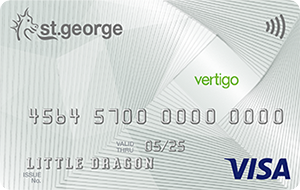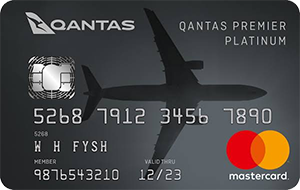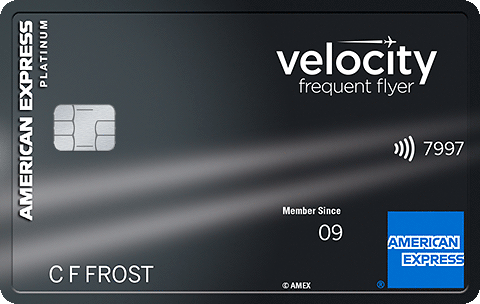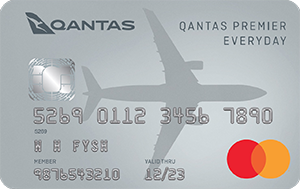
Hi, I’m a personal finance expert who loves to help you out! I’ll answer your question within a business day. Pinky swear.

Every Christmas ends the same way: happy faces, a recycling bin full of crinkled wrapping paper and a couple of extra kilos around the midsection. And of course, there is that credit card bill. *shudder*

How Do Balance Transfers Work?
Balance transfer offers are used by credit card providers to attract new customers. But, that doesn’t mean you can’t find the right offer and use it to your advantage. Here’s how they work.
With a balance transfer, you pay a much lower rate on your transferred balance. So, instead of your balance attracting a rate of 18% p.a. or more, it could attract no interest at all on a 0% p.a. balance transfer offer. This allows you to pay less in interest, as you pay off more of what you owe. If you do it right, that lets you pay down your debt faster.
Of course, that low rate doesn’t last forever – it will only apply over the offer’s introductory period. After the introductory period ends, any of that balance transferred onto an account that remains unpaid will start attracting the card’s revert rate. This could be the standard purchase rate or cash advance rate, depending on the card’s terms.
You can compare balance transfer cards with interest-free periods here.
Q. How does the transfer happen?
A. When you apply for a balance transfer card, you provide details of the transfer you want to make. This includes the amount you want to transfer, and where it’s being transferred from. Once your application is approved, your new card provider arranges the balance transfer. The transferred balance will show up in your new account, and you can get to work paying it off.
Note, some card providers request transfer information after card application, once the new account has been set up.
Q. How much can you transfer?
A. The amount you can transfer will depend on your approved credit limit and the terms on your new card. Some card providers limit transfers to 80% or 90% of an applicant’s approved credit limit. That means, if you choose a card with a transfer limit of 90% and you are approved for a credit limit of $10,000, you would be able to transfer up to $9,000.
Why do card providers set limits like this? Say you were late making a payment, or you used the card to make a withdrawal. The fees and charges associated with those actions would take you over your credit limit if you were allowed to balance transfer 100% of your approved limit, which would lead to further fees and a potential knock to your credit score.

Pros & Cons of Balance Transfers
Okay, so now we’ve covered the basics, let’s dig a little deeper into balance transfers and what they have to offer.
Pay Less Interest
This has to be the most appealing aspect of a balance transfer. By choosing a balance transfer card, you will pay less in interest on your transferred balance. The key is finding an offer with a super low transfer rate – 0% is best – and an introductory period that gives you enough time to pay off your transferred balance.
Get Out Of Debt Faster
As you are paying less in interest, you can pay down more of what you owe. So, instead of paying $20 in interest and $200 towards your balance, that entire $220 would go towards paying down your balance. This lets you chip away at more of your balance, so you can pay down what you owe, and clear your debt faster,
Motivation To Pay Off What You Owe
So you know you have credit card debt, but paying it down little by little doesn’t seem to be getting you anywhere. You lose motivation and let your balance grow. With a balance transfer however, you know you have to pay down as much as you can within the introductory period. This could give you the motivation you need to clear that debt once and for all.
Consolidate Your Debt
It’s not uncommon to have a few credit cards on the go. You may even have a store card or two and a personal loan. If you have trouble managing all those debts efficiently, you could benefit from consolidating them onto a balance transfer card. Not only would you benefit from a lower intro rate, you will also have just one repayment to worry about.
Transfer To A More Suitable Card
Whether your financial situation has changed, or you simply chose the wrong credit card last time you applied, by using a balance transfer offer, you could switch to a card that better meets your needs. So, even if you have a balance on those unsuitable cards, you can transfer it over, take advantage of the lower intro rate, and benefit from a more suitable card long term.

As with almost everything in life, where there are ups, there are also downs. Balance transfers come with small print, which you need to read and understand if you want to make the most of what’s on offer.
Run Up More Debt On Your Old Card
When you transfer a balance to a new card, the old card account remains open. Some cardholders find the temptation of all that freed-up credit too much to resist – and start spending again on that card.
To avoid this happening to you, consider closing the old card account.
Fail To Pay Off Your Transferred Balance
When you have an introductory period that lasts a while, it can be all too easy to put off making repayments – or to simply forget to make them. Before you know it though, that intro period is over, and your transferred balance is still sitting there, waiting to be paid off.
To avoid this happening to you, create a repayment schedule and set up automatic repayments.
| TIP: Even if you don’t pay off a huge amount every month, you still need to make the minimum repayment. This is outlined in your statement. If you fail to make the minimum repayment, you will likely pay a late fee – and it may be recorded on your credit report. |
Create A Cycle Of Debt
Some cardholders think of balance transfers as a way to move debt around without ever paying it off. Others rack up a balance on one card, transfer it to another, and then spend on both. These scenarios can create a cycle of debt that’s difficult to get out of, costing cardholders in interest, while potentially affecting their credit score.
To avoid this happening to you, use your balance transfer as an opportunity to get out of debt. It is meant to be a short term solution, but you need to make long term changes to see benefit within your financial situation.
Pay ‘Hidden’ Fees And Interest
Balance transfer offers can come with certain fees. You may pay a balance transfer fee, for example, which will be added to your balance and must then be paid off. If you choose to spend on your new card, you may also not be aware that you don’t get any interest free days on purchases until you pay off your balance transfer, adding to the total cost you will need to repay.
To avoid this happening to you, read the small print to check for fees before you apply, and avoid spending on the card unless you know you can repay the transferred balance and any new purchases – plus the interest they accrue – within the intro period.

When A Balance Transfer Will Suit You
A balance transfer can be a pretty handy tool, but this type of offer is not for everyone. So, how do you know if a balance transfer is the right option for you?
You’re motivated to pay down your debt. You know how much you can pay down each month, and you know that will allow you to clear your transferred balance within the card’s intro period.
You want to pay less in interest. So, you may have overspent this Christmas, but that doesn’t mean you have to pay through the nose for it. You want to use a balance transfer card to cut interest costs, and then pay down your debt faster.
| Example: Let’s say you have a credit card debt of $5,000 on a card with a purchase rate of 20% p.a. If you wanted to pay off that debt within 12 months, you would pay $460 each month, paying a total of $461 in interest. By opting for a card with a 12 month 0% p.a. balance transfer offer, you would pay $417 each month and pay nothing in interest.
Or perhaps you give yourself two years to pay off the debt. You would clear that $5,000 in two years, paying $255 per month, at a total cost of $982 in interest. On the other hand, choosing a card with a 0% p.a. balance transfer offer over 24 months, you would repay $209 per month, as you pay zip in interest. |
You want to consolidate your debt. You have a few cards that you want to pay down, and life would be easier if you only had one card and one debt to manage. With the right balance transfer card, you can consolidate all those other debts, taking the stress and hassle out of your repayments.
You want to switch to a more suitable card. You know the card you have is no longer suitable, but you have a balance owing on it. By transferring that balance to a more suitable card with a balance transfer offer, you not only get your hands on a better card, you also save on interest to clear your balance faster.

When A Balance Transfer Won’t Suit You
As we said earlier, balance transfers aren’t for everyone. If you fit into any of the following categories, a balance transfer may not be for you.
You know you won’t pay off your transferred balance. If you have a large debt that you know you won’t be able to pay off within the introductory period, you may be better off looking into other debt consolidation options, such as a debt consolidation loan.
You’re not ready to commit to paying down your debt. A balance transfer is a tool – but that tool only works when you put in the effort to make it work for you. Think carefully about whether you are ready and able to pay down your debt. Remember, a balance transfer could provide you with the motivation you need to get it done.
You won’t get approved for a balance transfer card. Like any other credit card, you need to meet certain eligibility requirements to get approved for a balance transfer card. It’s also worth bearing in mind that if you have a lot of debt owing on your other credit cards, that could make it more difficult to get approved for a balance transfer.
You think it will create more debt. Again, balance transfers are a tool. They are a short term solution. They are designed to help you pay down debt, clear it, and get back to zero. If you think applying for a balance transfer card will only lead to more debt, you should look at other options, such as financial counselling.

How To Compare Balance Transfers
With that in mind, it’s now time to look at how to compare balance transfer offers. When you apply for any credit card, you need to know what to look for in order to choose the right one for you. This is especially true with a balance transfer card however, as you are using the balance transfer to perform a task.
Here are some of the most important factors to take into consideration when comparing balance transfer offers – and the cards as well.
If you plan on keeping the card simply to pay down your debt, you won’t have to worry too much about the following factors. On the other hand, if you want to use the card day to day – and keep it after the introductory period ends – be sure to compare these features.
|

Best Balance Transfer Offers
Balance transfer offers are always changing. Which is why we make it easy for you to see which balance transfer offers are out there, to then compare them side by side using our handy comparison tool.
Credit card providers are always changing their offers, which is why one of the best ways to choose is to check out our comparison page. You can sort the cards by length of 0% interest offer (some are up to 36 months!), the annual fee or the purchase rate.

Is A Longer Offer Better?
As you can see from the above offers, there are quite a few to choose from that give you two or more years to pay off your transferred balance. So, is longer better? That really depends on what you’re looking for – as well as factors such as your budget and your organisational skills.
With a longer offer, you can spread your repayments over a longer period, meaning you can choose to pay off less each month. This could fit your budget better if you have a larger debt to pay off, or you don’t have as much to spare each month to put towards paying down your transferred balance.
However, by choosing a longer offer, you will need to keep on top of your repayments over a longer period of time. This could require a bit more organisation and dedication to keep at it over the long haul. Some cardholders may prefer a shorter offer, as it gives them the motivation to clear their debt faster.
For some, having a longer offer may mean they forget about their debt, only making the minimum repayments, while putting off making bigger repayments to pay down what they owe. They may also continue to spend on the card, forgetting that their main objective in choosing the card was to pay down their transferred balance.
Overall, the answer lies in what you want from the offer, and what you know you can achieve. These longer offers can be amazing for cardholders who need a bit more breathing room to pay down their debt. On the other hand, shorter offers can work well too, providing motivation to clear that transferred balance, and get on with using the card day to day.

How To Apply For A Balance Transfer
| Ready to apply? Here’s what you can expect during the application process – and what you need to do before you start your application.
Step 1. Check Your Credit Score. When you apply, the card provider will check your credit report to assess your creditworthiness. It’s important to check your credit report first to make sure it doesn’t contain any errors – and that you will be eligible to apply. |

Do’s & Don’ts Of Balance Transfers
- Create a repayment plan by working out how much you will need to pay off each month. Then set up automatic payments so you can ‘forget’ about it.
- Close the old card account to avoid the temptation to spend. Be aware of how this may affect your credit score if you have had the card for a long time and have always made repayments on time.
- Avoid spending on the card unless you know you can pay off both your new spending and your transferred balance within the intro period.
- Similarly, it’s best to avoid withdrawing cash on the card. This applies to all credit cards. The high interest and fees are just not worth it.
- Don’t get trapped in a cycle of debt. While it may be tempting to simply leave your debt ticking over, safe in the knowledge that you can apply for another balance transfer when this one finishes up, it’s not a great way to manage your finances. Instead, use this opportunity to pay down your debt and get rid of it once and for all.
Photo source: Pexels

Pauline Hatch
Pauline is a personal finance expert at CreditCard.com.au, with 9 years in money, budgeting and property reporting under her belt. Pauline is passionate about seeing Aussies win by making their money – and their credit cards – work smarter, harder and bigger.
You might be interested in

Credit Card Types
Credit Card Fraud Statistics

Tips & Guides
Complete Guide to the Velocity Frequent Flyer Program
Recently Asked Questions
Something you need to know about this card? Ask our credit card expert a question.
Ask a question
Hi, I’m a personal finance expert who loves to help you out! I’ll answer your question within a business day. Pinky swear.














eileen
27 June 2023Pauline
28 June 2023